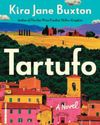
Creating consistent characters is one of the mainand most important-jobs of writing. If a character acts in ways that feel incongruous with how the author has developed and presented them, their behavior often feels jarring and erratic, and can undermine the reader's investment and a story's impact.
Human nature can be complex and opaque, but even our seemingly irregular actions are almost always based in reason, even if not in logic. We may not know what's prompting it, and nor may those around us, but something is causing our behavior. It does not exist in a vacuum. What may seem to be a person acting against their nature is usually simply someone doing something for which we, and sometimes even they, don't yet understand their motivations.
The author's job is to determine and believably convey what those factors are and ensure that when characters seem to be acting against their nature it's deliberate and supported and for a purpose that serves the narrative. Using out-of-character behavior intentionally can create more interesting, faceted characters, build reader engagement, and drive the story propulsively forward.
What Defines Character
Consistent characterization stems from three main elements: their personality/traits, their background/ situation, and their identity-in other words, who your character innately is, what forces shaped them, and who they have become as a result. Nature and nurture combine to form cohesive characterization, and the writer's job is to show that consistently on the page in how they act, react, and interact with other characters.
Esta historia es de la edición July - August 2024 de Writer’s Digest.
Comience su prueba gratuita de Magzter GOLD de 7 días para acceder a miles de historias premium seleccionadas y a más de 9,000 revistas y periódicos.
Ya eres suscriptor ? Conectar
Esta historia es de la edición July - August 2024 de Writer’s Digest.
Comience su prueba gratuita de Magzter GOLD de 7 días para acceder a miles de historias premium seleccionadas y a más de 9,000 revistas y periódicos.
Ya eres suscriptor? Conectar

What Is Your Story Question?
Revision and editing advice to take your first draft to the next level.

Writing for the People We Hope to Become
Elisa Stone Leahy's new middle-grade novel, Mallory in Full Color, tackles the in-between moments of adolescence, when who we are and who we want to become collide.

Creating Community
Whether hot off the presses or on the shelves for years, a good book is worth talking about.

Pat Barker
The Booker Prize-winning author of Regeneration shares the role characters play in developing novel ideas and explains what appeals to her about reimagining mythology.

How to Write in Different Genres
Emiko Jean and Yulin Kuang share tips and strategies for how they successfully write in different genres and mediums.

The Shortest Distance Between Two Points
Ten tips for writing a novel with 100-word stories.

Mayfly Marketing
How to sell your novel in a short-attention-span world.

"You'll be a great essay".
How to write six types of personal essays by finding the funny in your life.

The Idea Factory
Tired of staring at an empty screen? Unlock your inner fiction generator with these surprising inspiration techniques.

Seinfeld Was Right: That's a Story
Use mundane moments from everyday life to create stories that pack a punch.